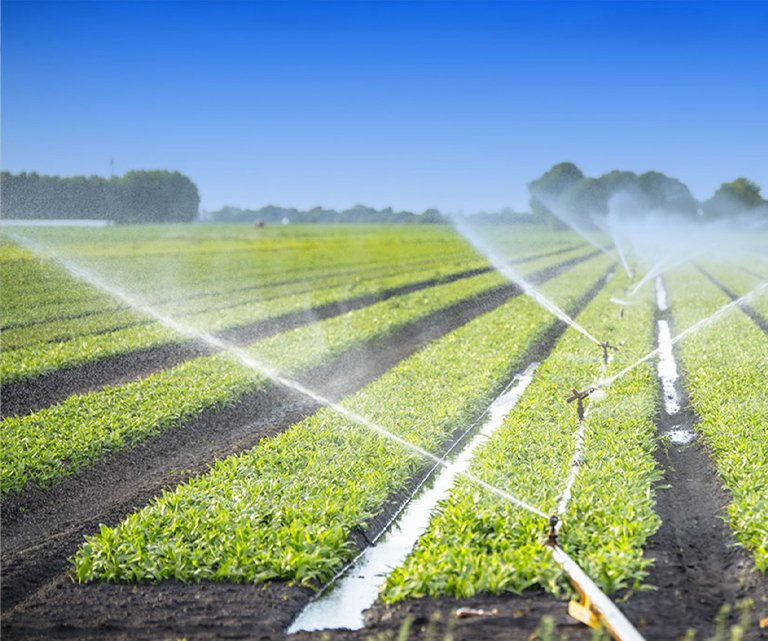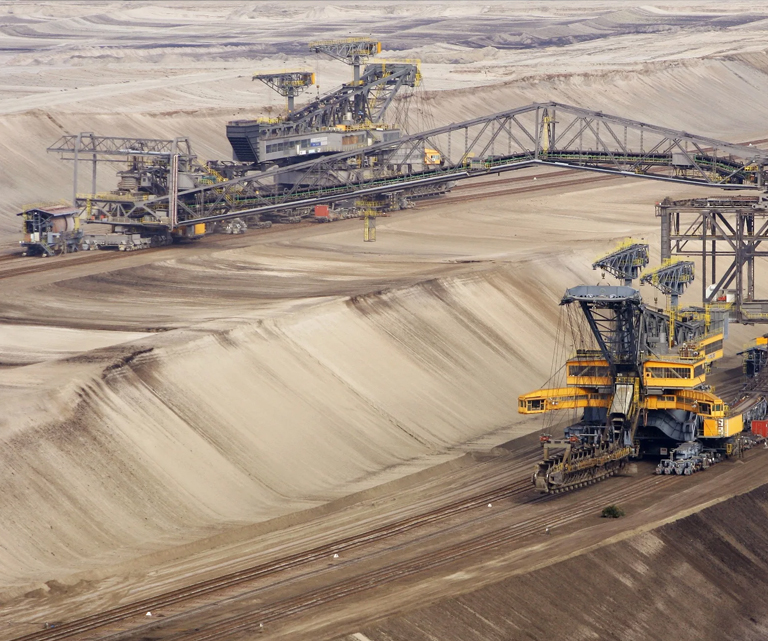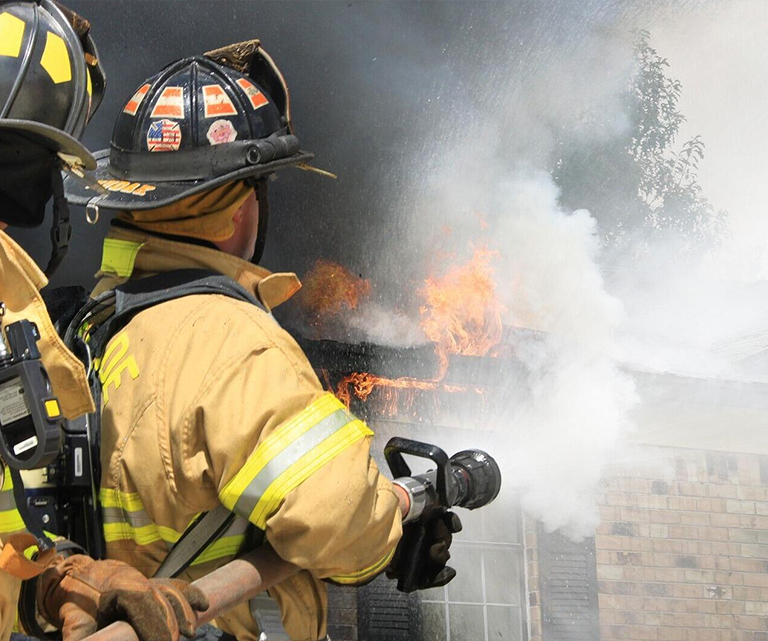Light weight, good elasticity, low resistance to water flow, easy to coil.
TPU lined semi-rigid hose features a rugged thermoplastic polyurethane (TPU) liner for strength and toughness. It has cryogenic performance to remain flexible in cold environments while also being oil and chemical resistant. The hose use for automotive, hydraulic systems, and industrial fluid transfer.

Forestry Fire Protection

Agricultural Fire Protection

Industrial Fire Protection

Municipal Fire Protection
Good strength and toughness, Low temperature resistance, Oil resistance and chemical corrosion resistance.
| Pressure Required | |||||||
| Caliber | Work Pressure | Burst Pressure | |||||
| (inch/mm) | Bar | MPa | Psi | Bar | MPa | Psi | |
| 1* | 25 | 13-25 | 1.3-2.5 | 190-365 | 39-75 | 3.9-7.5 | 570-1090 |
| 1-1/4" | 32 | 8-25 | 0.8-2.5 | 120-365 | 24-75 | 2.4-7.5 | 350-1090 |
| 1-1/2" | 38 | 8-25 | 0.8-2.5 | 120-365 | 24-75 | 2.4-7.5 | 350-1090 |
| 1-3/4" | 45 | 8-25 | 0.8-2.5 | 120-365 | 24-75 | 2.4-7.5 | 350-1090 |
| 2" | 52 | 8-25 | 0.8-2.5 | 120-365 | 24-75 | 2.4-7.5 | 350-1090 |
| 2-1/2" | 64 | 8-25 | 0.8-2.5 | 120-365 | 24-75 | 2.4-7.5 | 350-1090(CCCF Certification) |
| 2-3/4" | 70 | 8-25 | 0.8-2.5 | 120-365 | 24-75 | 2.4-7.5 | 350-1090 |
| 3" | 75 | 8-25 | 0.8-2.5 | 120-365 | 24-75 | 2.4-7.5 | 350-1090(CCCF Certification) |
| 4" | 102 | 8-16 | 0.8-1.6 | 120-235 | 24-48 | 2.4-4.8 | 350-700 |
| 5" | 127 | 8-13 | 0.8-1.3 | 120-190 | 24-39 | 2.4-3.9 | 350-570 |
| 6" | 152 | 8-13 | 0.8-1.3 | 120-190 | 24-39 | 2.4-3.9 | 350-570 |
1. Understanding EPDM Lining Properties The EPDM rubber lining provides intrinsic resistance to heat, weather, and many chemicals. Its polymer structure determines susceptibility to: Acidic and alkaline solutions Petroleum products such as...
READ MOREI. The Structural Mandate of Fire Hoses The performance of an EPDM Fire Hose relies critically on the structural integrity of its two main components: the inner EPDM rubber liner (providing a smooth waterway and chemical resistance) and the...
READ MOREThe modern **EPDM Fire Hose** is an engineering marvel, designed to handle both the intense thermal stresses of fire suppression and the mechanical demands of deployment in extreme climates. EPDM (Ethylene Propylene Diene Monomer) rubber is...
READ MOREIn the field of industrial fluid transportation, the performance evolution of hose materials has experienced a two-way pull from flexibility to rigidity. In recent years, a structural form called Semi-Rigid Layflat Hose is leading hose design into a new stage. Compared with traditional flexible hoses or fully rigid pipes, this "semi-rigid" structure not only takes into account the advantages of both, but also effectively avoids their respective limitations, and is gradually becoming an important breakthrough in the design of modern hose systems.
"Semi-rigid", as the name suggests, is a structural characteristic between full flexibility and full rigidity. This structure gives the hose body a certain degree of support, so that it is not easy to deform, twist, collapse and other problems when it is bent, compressed or operated at high intensity.
Specifically, Semi-Rigid Layflat Hose adopts a multi-layer composite structure design, and the internal material configuration is specially optimized, so that the hose has obvious shaping ability and shape retention during use, but it does not lack flexibility like a fully rigid pipe. This structure achieves a high degree of unity between flexibility and pressure resistance, representing a deep integration and innovation of hose technology.
In the fluid delivery system, the shape change of the hose directly affects the pressure distribution and flow rate efficiency of the internal fluid. Traditional flexible hoses are prone to bending, twisting or even collapse during use, causing increased fluid resistance and local pressure drop, which in turn affects the flow balance of the entire system.
The semi-rigid structure of the Semi-Rigid Layflat Hose can always maintain an approximately straight line or stable arc state during use, significantly reducing the pressure loss caused by bending. This good shape retention helps the fluid to pass through the pipeline quickly and smoothly, effectively improving the overall delivery efficiency and stability.
In addition, during the dynamic operation of the hose, its inner cavity will not be easily deformed by external physical interference, further ensuring the continuity and safety of the system.
In high-intensity working environments, hoses often face various physical pressures from the outside, such as heavy object pressure, mechanical traction, bending and pulling, etc. Under such conditions, traditional flexible hoses are often difficult to maintain their original shape, and are prone to problems such as inner wall collapse, extrusion deformation, and even rupture and leakage.
The semi-rigid structure of the Semi-Rigid Layflat Hose focuses on overall stress dispersion and anti-torsion capabilities in design. Whether facing external force extrusion or continuous bending, the hose body can maintain structural integrity, the inner cavity remains unobstructed, and the tube body will not show obvious deformation.
This stable structural support not only improves the durability of the hose, but also greatly reduces the safety risks and system interruption probability caused by accidental deformation.
Compared with traditional fully rigid pipes, a major advantage of Semi-Rigid Layflat Hose is that it has good retractability. Although it has a certain rigid support, it can still be easily rolled, folded, and stored when not in working state.
This "rollable but not soft" feature greatly saves space requirements when the hose is not in use, making it convenient for storage stacking and logistics transportation. Especially in batch layout and centralized deployment scenarios, the semi-rigid structure can effectively improve work efficiency, reduce on-site loading and unloading time, and optimize the material dispatch process.
In the later maintenance and disassembly process, the staff can also operate easily without a lot of external force assistance, reducing manpower consumption and operation difficulty.
Although traditional rigid pipes are strong, they are bulky and difficult to carry; although flexible hoses are light, they are often not resistant to pressure. The structural solution adopted by Semi-Rigid Layflat Hose has achieved a relatively ideal balance between weight and strength.
This structure not only ensures the tensile strength and pressure resistance of the material body, but also retains the lightweight characteristics of being controllable and easy to carry. This dual balance design makes it the preferred hose form in scenarios such as on-site installation, repeated use, and mobile transition.
More importantly, this balance not only optimizes the operating cost, but also improves the overall work efficiency and pipe network response speed, making the engineering system more flexible and efficient.
During long-term use, hoses often undergo permanent deformation due to factors such as material fatigue, continuous pressure, and climate change. This deformation will bring about a series of problems such as increased transportation resistance, increased risk of water leakage, and increased maintenance frequency.
Due to its unique structural rigidity distribution, Semi-Rigid Layflat Hose can maintain its original shape and size under long-term working conditions, greatly delaying the deformation process.
Whether in harsh environments such as high temperature, low temperature, high humidity, and strong ultraviolet rays, the structure still has excellent dimensional stability and morphological controllability, providing a solid guarantee for the long-term operation of the engineering system.
Taizhou Jun'an Fire Technology Co., Ltd. is located adjacent to the world's largest trading port - Shanghai. It is an enterprise specializing in the production of fire hoses, fire equipment, and emergency rescue equipment. The semi-rigid structure represented by Semi-Rigid Layflat Hose is not a single performance enhancement, but a cross-dimensional structural innovation. From shape retention to pressure resistance, from bending adaptability to storage convenience, this structural form has set off a conceptual revolution in hose product design.
It provides a wider range of possibilities for the application of hoses in future complex projects, and also provides engineering designers with more imaginative options. It can be foreseen that with the continuous deepening of the concept of structural optimization, semi-rigid hoses will occupy a core position in more industrial systems and become an important pillar in the era of flexible transportation.